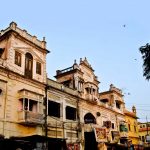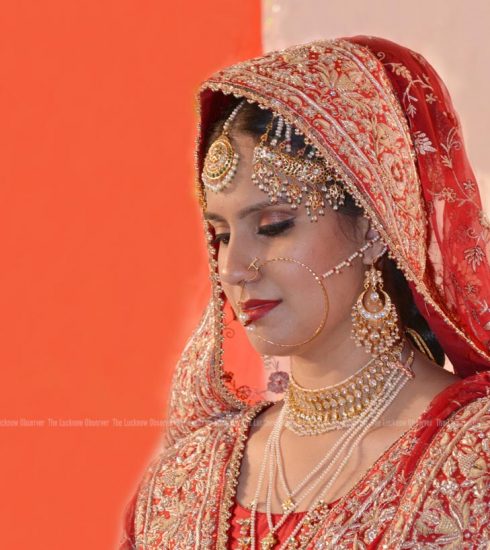Aminabad
The criss-cross Lucknowi life
The history of the city of Lucknow is so intensively comprehensive that each locality carries many a story of the bygone days, which evoke nothing but amazement and nostalgia. It is common knowledge that during the rule of the Avadh Sultanate, Chowk Bazaar was the foremost market in Lucknow where almost every need of daily life was readily met. This place was also the epicenter of affability, accord, savoir-faire, literary pursuits and achievements. After the usurpation of the Nawabs and advent of British supremacy the focus of attention for development shifted to Hazratganj, which became the upmarket for the British gentry. Around the same time, the genesis of another market was laid by the local inhabitants at the outskirts of the city, which came to be known as Aminabad.
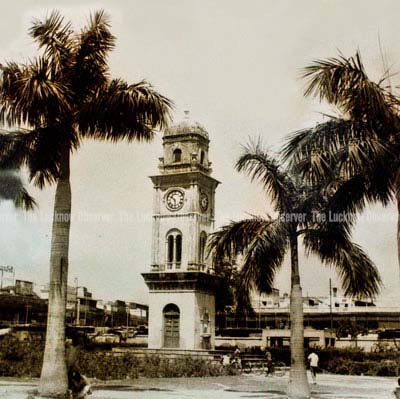
Aminabad Park
Till the middle of the 19th century the area on the south-western outskirts of the town was known as Masarratganj while some others called it Sikandarabad, being in consonance with the name of Sikandar Shikoh, son of Shah Alam II. In 1722 the Mughal Emperor appointed Saadat Khan Burhan-ul Mulk as the Subedar or Governor of Agra and Avadh province. Burhan-ul Mulk’s real name was Mir Syed Mohammad Amin. After the death of Sikandar Shikoh his wife became custodian of the property in Masarratganj and she sold it for Rs.28000/- to Nawab Imdad Husain Khan Aminuddaulah, who was the Prime Minister of Nawab Amjad Ali Shah. Aminuddaulah was a visionary and he took upon the task of metamorphosing this area into a developed zone. Over the following years concrete houses, shops and parks replaced the thatched huts and ramshackle shelters in the open fields. With the names of two Amins connected to it Masarratganj or Sikandarbad may have started mutating to Aminabad during this period.
By the beginning of the 20th century Aminabad had become a common name and had become a bustling commercial-cum-residential hub brimming with people. Four gates had been erected on all the four sides and each gate had an adjoining mosque. The biggest gate known as Kalaan Phatak was at the main crossing and the mosque near it was also called Kalaan Phatak Masjid. Towards the west was the smaller Khurd Gate near Mehra Cinema on Gwynne Road. The gates no longer exist but the mosques are still there and are known by their original names. Aminuddaulah also initiated the construction of a big park in the open space within the rows of the newly opened shops during this time. In 1912 the British government made a master plan for this area and, as per the plan, roads on all the four side of this park were laid out and the park came to be known as Aminuddaulah Park.
Among some other historical buildings of that era was a Baradari of Imambada Sikandar Shikoh near the park, which was bequeathed by Aminuddaulah to his wife Abbasi Khanum. The palatial Wazir Manzil, adjoining Gunge Nawab Park, was the meeting place of Aminuddaulah. But after the death of his wife other people took over its possession. Finally, an advocate by the name of Shaikh Farzand Ali took control of it and later sold it for Rs.10,000/- to Afsar Jahan, wife of Barrister Mumtaz Husain. Gunge Nawab Bagh was located behind the rows of shop on the south side of Aminuddaulah Park opposite Mumtaz Degree College and next to the present day Pratap Market. Later in 1941, according to Husain Amin, son of the illustrious Amin Salonvi, this huge building was given to Shaukat Thanvi, a close colleague of Amin Saheb. Shahi Kothi, which was in existence when Aminuddaulah took over this entire property was a double-storied building which housed the newly established Canning College in 1864 and when the college’s own building in Kaiserbagh was ready, it moved over there in 1878. Later on when Canning College progressed into a university, it was shifted to its present location at erstwhile Badshah Bagh.
When Aminuddaulah Park was being carved out a smaller garden known, as Padayin Ka Bagh already existed there, which also had a mosque. Some historical facts in the government gazette reveal that this garden existed till 1805. Nawab Burhan-ul Mulk married the daughter of Mohammad Taqi Khan, Subedar of Akbarabad. A concubine by the name of Khadija Khanum had accompanied the bride and stayed in the nawab’s palace. However, Burhan-ul Mulk’s wife died early and then he married Khadija Khanum in the year 1700 AD. Khadija Khanum got a mosque built around which was also a garden. This garden came to be known as Padayin Ka Bagh because a Panditayin of Kunwar clan had added a bathhouse next to the mosque. As per the death wishes of Khadija Khanum she was buried in this garden and her grave is still there in the form of a platform though the plaque on the wall behind the grave declares it to be of some Padhaan Baba, which is a fallacy according to Roshan Taqui, a historian and Syed Agha Mehdi, in his book Tareekh Lucknow. The mausoleum over the grave had fallen down in 1912 when construction of Aminuddaulah Park started.
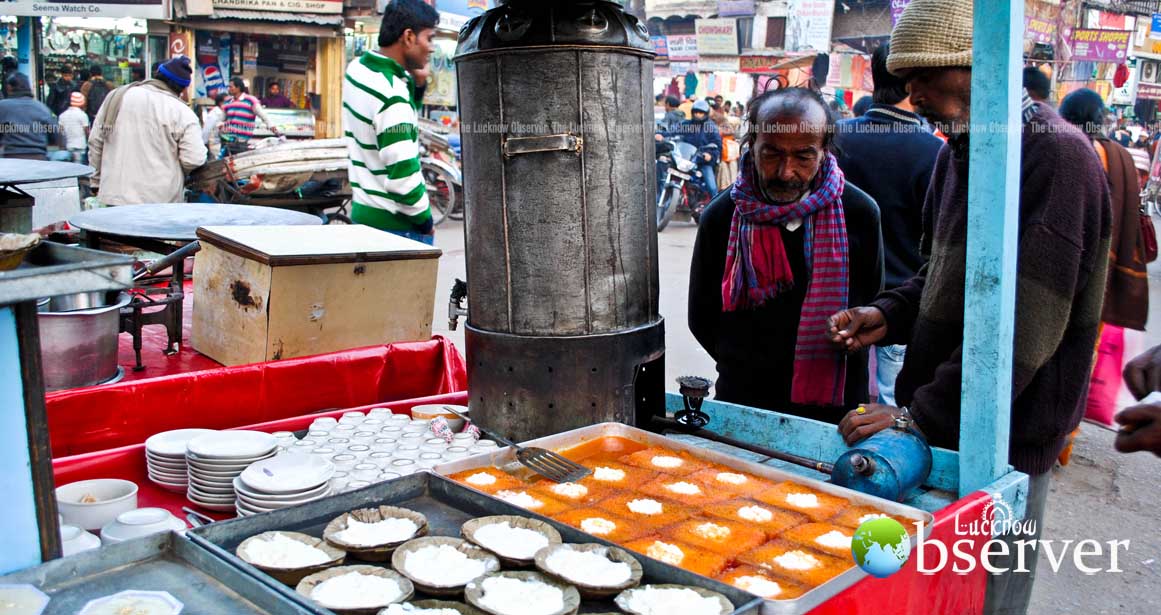
In the following years the importance and stature of Chowk and Nakhas bazaar started receding and Aminabad gained ascendancy, and Aminuddaulah Park became not only the talk of the town but the nation itself. In 1928 it was at this park where during the struggle for independence the freedom fighters first hoisted the tri-colour. That eventful day was followed by the address to the nation by Mahatma Gandhi for the civil disobedience movement. Many more leaders including Jawahar Lal Nehru, Atal Bihari Bajpayee and Subhash Chandra Bose gave fiery speeches for independence at this platform.
The huge congregation that had gathered at Aminuddaulah Park to listen to Jawahar Lal Nehru was brutally lathi-charged by the British force and several people, including Nehru, got hurt. Gulab Singh Lodhi had climbed up a tree in the park and hoisted the tri-colour flag. The British police shot him down and later on his statue was installed in the centre of the park and still stands there. The park by now had acquired the name of Jhandewala Park because flags of various Indian political parties fluttered here.
Right across the park, Chedi Lal Dharamshala became the second home for the leaders who came to Lucknow to give strength to the civil disobedience movement of Gandhi ji. Nearby Abdullah Restaurant at the main crossing was the meeting place of the leaders of Muslim League and Ganga Prasad Verma Memorial Hall across the park was the centre of interaction and discourse of the Congress Party leaders.
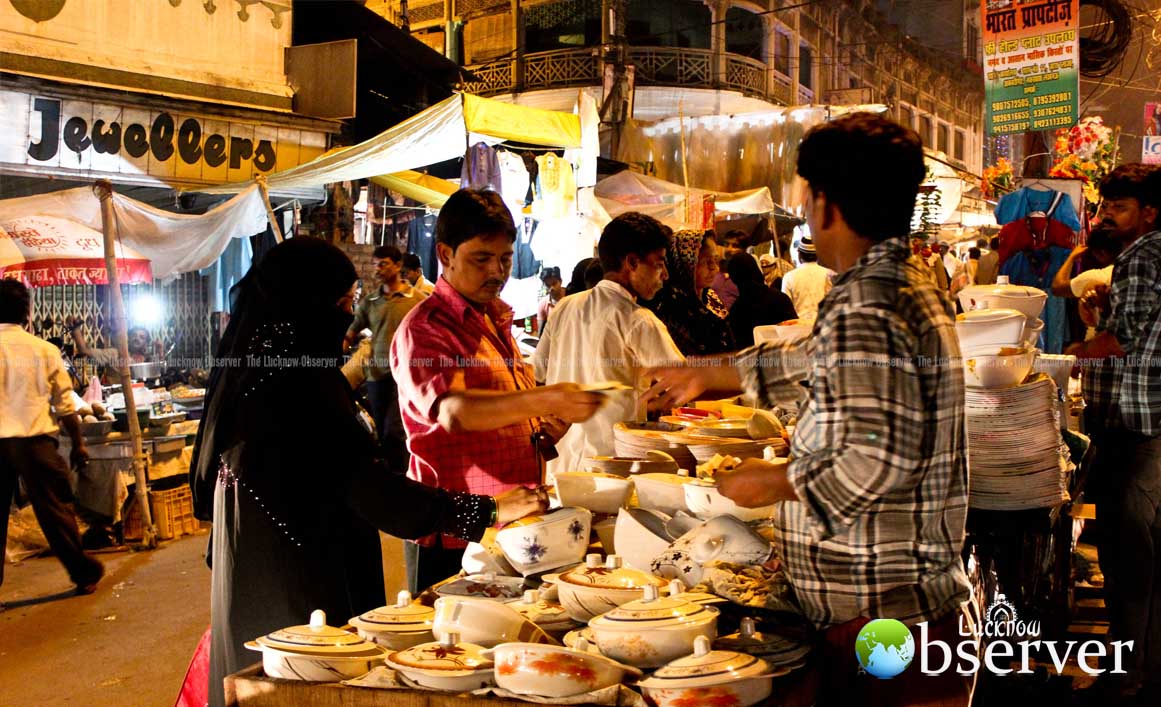
Prior to independence the literati of the city had made Aminabad their place of dwelling and they eagerly awaited the leading Indian newspapers like Humdum, Haqeeqat and Pioneer each morning. Newspaper vendors would come to the main crossing early morning and their wares were sold till late evening. The writers, poets and educationists even then frequented Danish Mahal in the ground floor of Central Hotel, and the nearby Siddiq Book Depot and Anwar Book Depot. There was a time when at these erudite centres one could have come across the likes of Syed Masood Hasan Rizvi, Dr. Shujaat Ali Sandilavi, Josh Malihabadi, Prof. Ehtesham Husain, Nawab Mir Jafar Ali Khan ‘Asar’, Majaz and many more. The owner of Danish Mahal, Nasim Ahmad, who passed away recently, was not only well-conversant with all kinds of books, but was also familiar with the persona and wherewithal of the stalwarts of the town.
The mode of transport had also undergone a sea change. Palkis, hawadars, finis and dolis had been replaced by ekkas and tongas. Further west of Central Hotel was the ekka-tonga stand plying horse-drawn carriages to Chowk, Nakhas, Saadat Ganj, Medical College, City Station, Golaganj and Daliganj at the flat rate of 1 anna per passenger. The mode of transport by now may have changed over to the tempo yet the various routes still remain the same. Across the street is the grand kothi of Chaudhary Haider Husain. On the left side of the road going down towards Kutchery is the once prestigious Gulmarg Hotel and further ahead is the residence of the great Islamic scholar Maulana Abul Hasan Ali Nadwi, former Rector of Nadwatul Ulama.
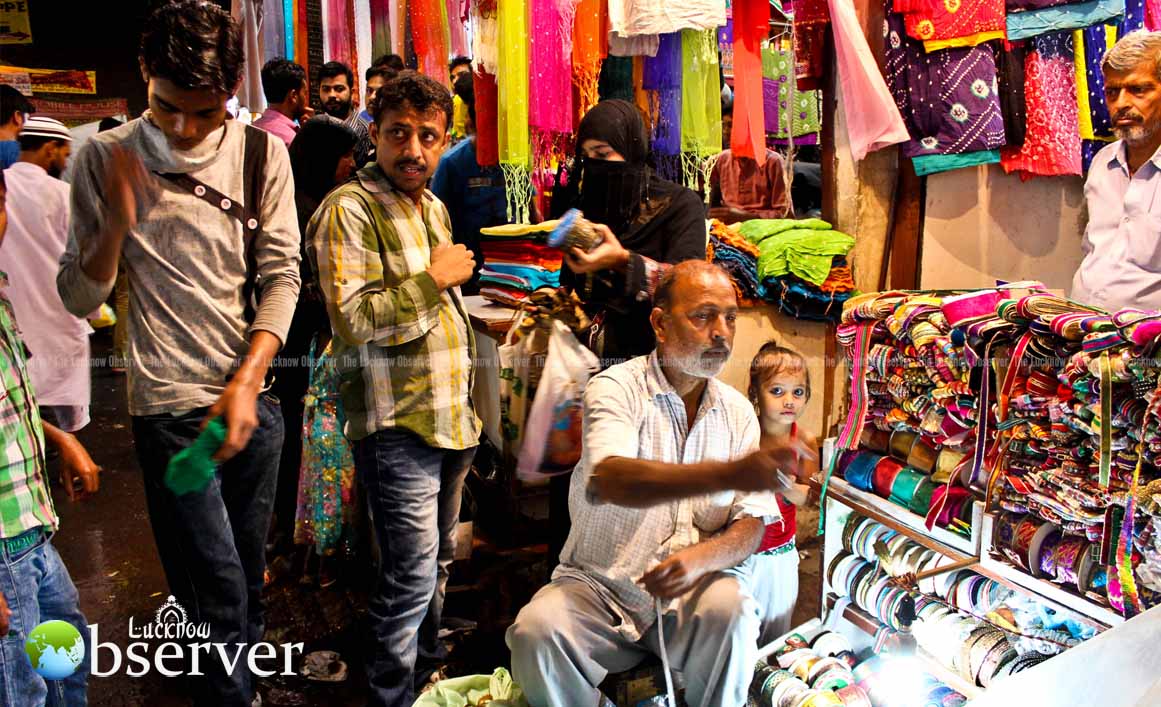
Aminabad also played a noteworthy role in the promotion of Hindu-Muslim amity, which in local parlance is called ‘Ganga-Jamuni tehzeeb’. Husain Amin, son of the illustrious litterateur Amin Salonvi, recalls that post independence, ‘Maghrib’ (Dusk) prayers were offered at the western end of Aminuddaulah Park on a daily basis and during the course of the prayer bells in the nearby mandirs were not struck as a gesture of mutual comity and what may seem strange today, Hindus would serve water for ‘wazu’ or ablution of the Muslims.
Rastogi Saheb, fondly called Mannan Babu, owner of Solomon Chemists, was always forthcoming in this exemplary service. Similar examples of mutual cooperation were the Choti and Badi Ramlila Ki Baraats. These processions are still taken out, but as per Husain Amin, the sights in those days were quite different. Generators were non-existent, so electricity to light up the procession was provided by the shops, which kept open even after midnight. Long electrical wires were intermittently plugged in the shops falling on the route as the procession progressed through the street of Aminabad.
Burqa-clad ladies would watch the proceedings from the balconies on top of the shops around ‘Ghanta-ghar Park’. During the month of Ramzan, groups of people belonging to different faiths went through the lanes of Aminabad and Chowk waking up the people for ‘Sehri’. Donations and other kind of charities were given for these small and big processions irrespective of individual faith. Alas, now we only give lip service to Ganga-Jamuni tehzeeb as selfish interests and jingoistic politics have ceaselessly corrupted our minds. Communal harmony has been bartered away for socio-political power at throwaway prices.
In the social and religious fabric of Lucknow is the well-known personality of Achchan Mian who is the son of Maulvi Siddiq, owner of Siddiq Book Depot. Although Achchan Mian hails from Ujariyaon in present Gomti Nagar, he regularly visits Aminabad and remembers the days when Aminuddaulah Park had lush green grass. Next to the ‘chaatwalas’ at the outskirts of the park would stand Maharaj with buckets of water to quench the burning tongues and throats of the relished consumers of ‘chaat’. The park had a beautiful fountain, which flowed non-stop on all evenings and local masseurs carrying varieties of oils in glass containers would massage the weary lying on the grass. At the same time, one had to be careful of the ever-present pickpockets too.
Aminabad park was not only visited by political leaders but was also the breeding ground of literary figures and was the birth place of luminaries like Amin Salonvi, Shaukat Thanvi and Nasim Inhonvi. Amin Salonvi went on to lay the foundation of the Urdu Independent News Agency and also managed the editorship of Avadh newspaper. Shaukat Thanvi became a satirist and was associated with publication of Sarpanch Newspaper and took interest in the growth of All India Radio. For several years, Amin Salonvi continued to be the chief organizer of the national level ‘mushairas’ of A.I.R held annually.
Aminuddaulah Park also had the distinction of holding the annual Milad-un-Nabi function, organized under the aegis of Maulvi Siddiq, Amin Salonvi, Mannan Babu, Maulana Mohammad Husain Shams, Umar Ansari, etc. Hindu shopkeepers of Aminabad would contribute monetarily for this function and would also provide water for the ablutions of the Muslims prior to ‘Isha’ prayers. Later on organization of the ‘milad’ came under the management of a society by the name of Anjuman Firdaus Adab. Eminent persons of the city were members of this committee like Abul Qasim of Asghar Ali Mohammad Ali Perfumers, Aslam Rizvi and Ashfaq Rizvi of Ahmad Husain Dildar Husain Tobacconists, Maulvi Fahimuddin of Illahi Baksh, Dr. A.J Faridi, Syed Ikramul Haq, Umar Ansari, Masroor Lakhnawi and many more. The first meeting of the committee was held in Ganga Prasad Verma Memorial Hall in 1950 and the following year the milad was held at a grand scale in Aminuddaulah Park. Over the years Siratul Nabi milad became a prestigious function of Lucknow and stalwarts like C.B Gupta, Babu Mahabir Prasad, advocate, Jagat Bahadur Srivastava, advocate, Sardar Karamjit Singh, Gyani Mahendra Singh, Sardar Singhar Singh yearned to be part of the functionaries. Towards dawn Maulana Hashim Mian of Firangi Mahal would describe the birth and good fortune of the birth of the Prophet of Islam with tears flowing down the eyes of the enraptured listeners.
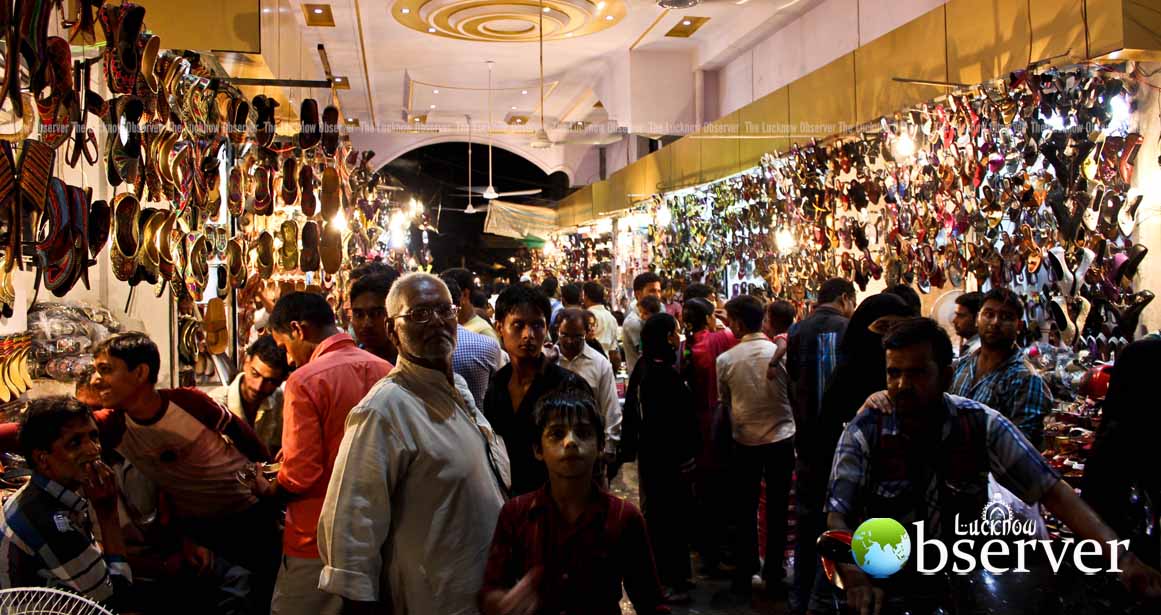
Some other interesting features of Aminabad were the cold drink shop of Surindar Singh which had become the focal point of the socialists of the day. Post independence, writers and publishers would gather at Noori Hotel for tea. Sangam Hotel and Sindh Popular were other popular joints of that period. Naim Pan shop, next to Abdullah Restaurant, drew connoisseurs of various schools of thought, stature and class. Laal Khambe wali dukan, selling varieties of laces and other embellishments for wedding trousseau is a very old and reputed establishment. Famous sitar player, Ustad Yusuf, stayed in Takia Ghami Shah in Aminabad where music director, Naushad, would pass by to listen to him. Ghadbadjhala was as gadbadh as it is today; the only change has been in the variety of goods on display and sale. From an amalgam of crockery, hosiery, readymade garments, cosmetics and artificial jewelry the goods have narrowed down to jewelry which is ‘sone chandi se kam nahi kho jaye gham nahi’.
Present day Gwynne Road in Aminabad also has the distinction of playing host to the first decent haircutting saloon and spa, namely Paris Saloon, and a 24 hours laundry. These two came into existence in late 1930s. Mehra Cinema was originally called Royal Cinema and it was even then famous for screening ‘Hunterwali’ series of films starring Fearless Nadia. Now most of the shops on this road are dealing in wedding and invitation cards and stationaries, except for the 100 years old Aleem & Sons, dyers and drycleaners.
Subsequent to the partition of the country, influx of the refugees from across the new borders were temporarily accommodated in Ghanta Ghar park and with passage of time the refugees started selling their wares at this place to earn their means of livelihood. Three rows of makeshift shops were created and slowly the mini-mart turned into a market of its own which got named as Refugee Market. Today it’s a throbbing place overflowing with ladies looking for cheaper versions of readymade, matching blouse pieces and sandals. Shops are rapidly installing split air-conditioners to withhold the ladies in pleasant environment. Plastic curtains put up by these shops to contain the cool air is clearly a ‘desi’ ingenuity.
More than 100 years later Aminabad may have turned into a chaotic commercial centre and no longer remains a place of amusement and enjoyment and has also not remained the abode of illustrious poets, writers and educationists, but it still has the flickering lustre of the famed Lakhnawi culture. Aminabad was the place about which was said ‘jo aake na jaye’, like Josh Malihabadi had said about Kaiserbagh in some other words, ‘Aaj bhi aati hai wahan se haye Akhtar ki sada’.
Lamentably today, Aminabad is in the vicious grip of traffic woes, growing number of street vendors who add to the congestion, dirty and un-kept roads and all around litter. The corridors along the shops have been encroached upon leaving little room for shoppers to walk. In February 2014, Chief Minister, Akhilesh Yadav had announced that the web of overhead electric wires would be removed within 6 months and approved a budget of 21 crore for laying of underground electric cables which was to be undertaken by LESA. 14 months have elapsed since then, yet, according to Mohd. Aslam of Aleem & Sons, ìthe work has been done in patches only and cable wires still lying on the roads are adding to the problem of commuters and shoppersî. Aminuddaulah Park is also undergoing a rejuvenation plan of the local administration, though the pace of work is very slow and, as such, it has to be seen how it finally turns out to be.
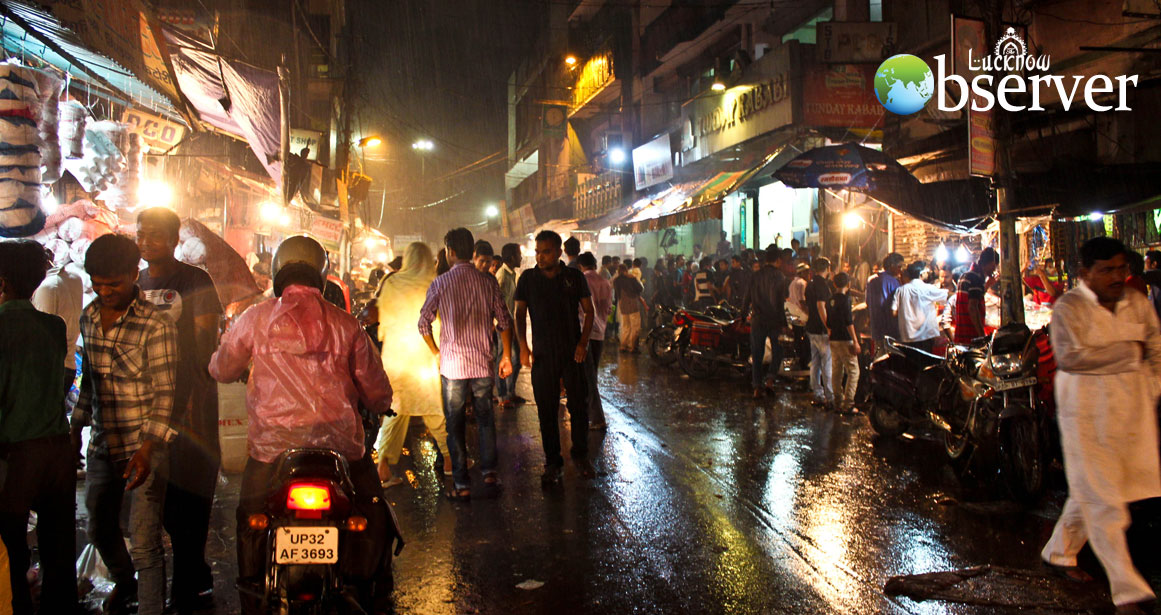
Howsoever, citizens should not bank upon the efforts of the government alone. It is time for the current generation of old and leading establishments like Khunkhunji Jewelers, Bhasin Sons, Sugnamall, Madan Lal Ballabh Das, Rikhabdas, A. Wahab, Gadha Bhandar, Burma Biscuit, Prakash Kulfi, etc, to come together and draft a scheme for improvement of the structure and environment of Aminabad. Merely improving the faÁade of one’s own shop paying little heed to the crumbling structure next door does not become aesthetics. There was a time when the main crossing of Aminabad would smell of ‘belas’ and ‘chamelis’, but now it stinks of rotting drains adjacent to the eateries.
Administrative authorities on their part should remove the encroachments and increase surveillance. The registered vendors should be allotted alternative spots which have scope of accommodating them and at the same time expand the weekly bazaars on off days of other markets so that the mobile vendors could carry on their business on a daily basis.
Most importantly the inadequate parking spaces need to be augmented. Perhaps the underground car park at end of Aminabad park could be made into a multi-storied one.
The good thing about present day Aminabad in the words of M. Aslam is ‘that the crowd has increased tremendously but the bad thing is that all come on vehicles’.
Finally I would like to end with a cautious note. Procrastination in withholding decadence could lead to whipping a dead horse. According to an Urdu poet ‘kahin aisa na ho’: “Warq dar warq, qarb-o-ehsaas ki puri puri dastaan hai..dil ko pash pash kar dene waley qisse hain, waqt ke kafan pehne yaadon ke janaze maqbaron ki phaseelon mein so rahe hain”.
Syed M. Rizwan
Writer is a freelance Translator and an expert of Lucknow’s heritage
(Published in The Lucknow Observer, Volume 2 Issue 14, Dated 05 May 2015)





